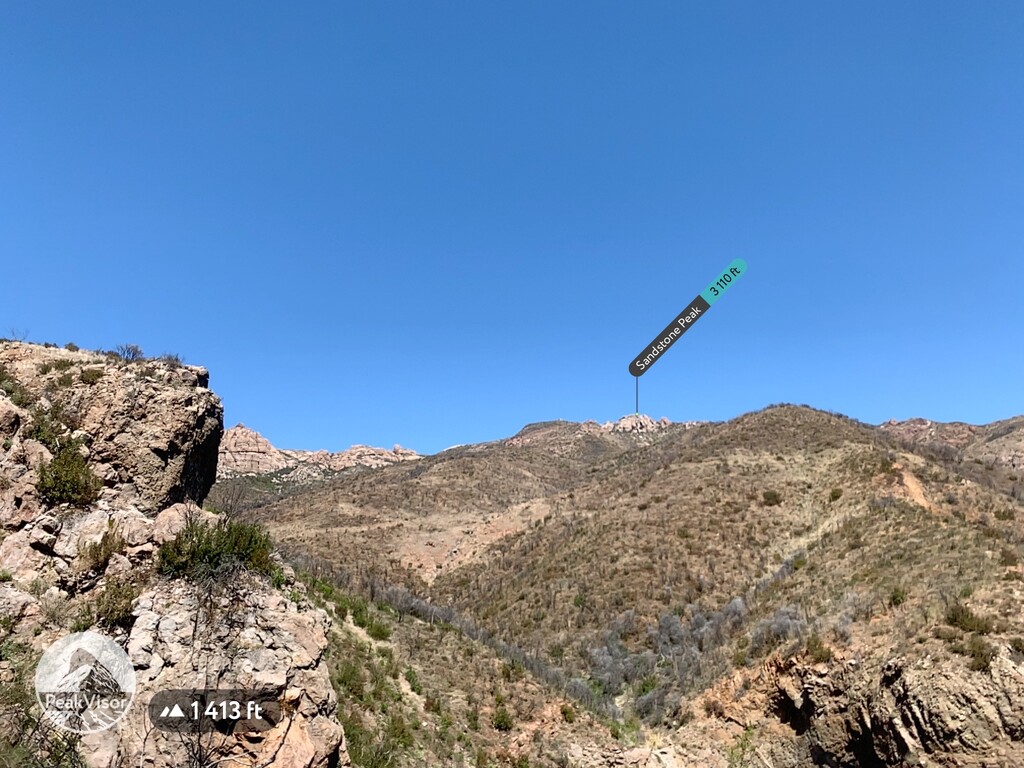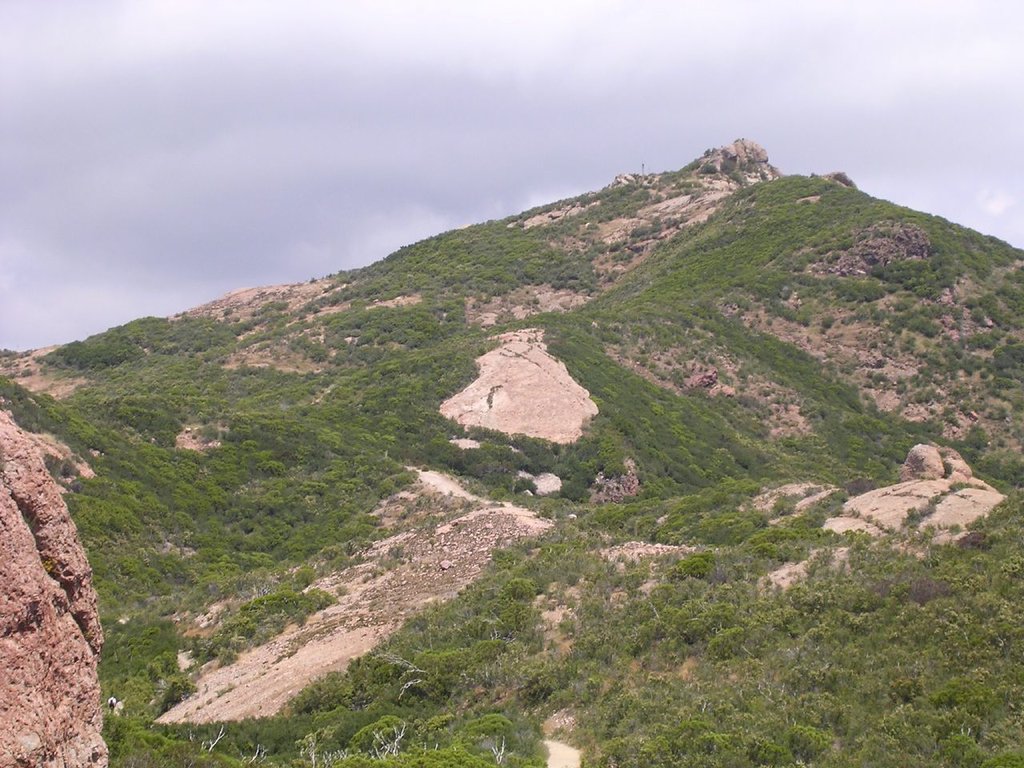Get PeakVisor App
Sign In
Search by GPS coordinates
- Latitude
- ° ' ''
- Longitude
- ° ' ''
- Units of Length

Yes
Cancel
Share ×

Scan the QR code and open PeakVisor on your phone
❤ Wishlist ×
Choose
Delete
Located in Southern California, the Santa Monica Mountains are a geologically complex set of summits characterized by steep rugged mountain slopes and canyons. The range follows the Pacific Ocean for roughly 40 miles from the Hollywood Hills in Los Angeles to Point Mugu in Ventura County.
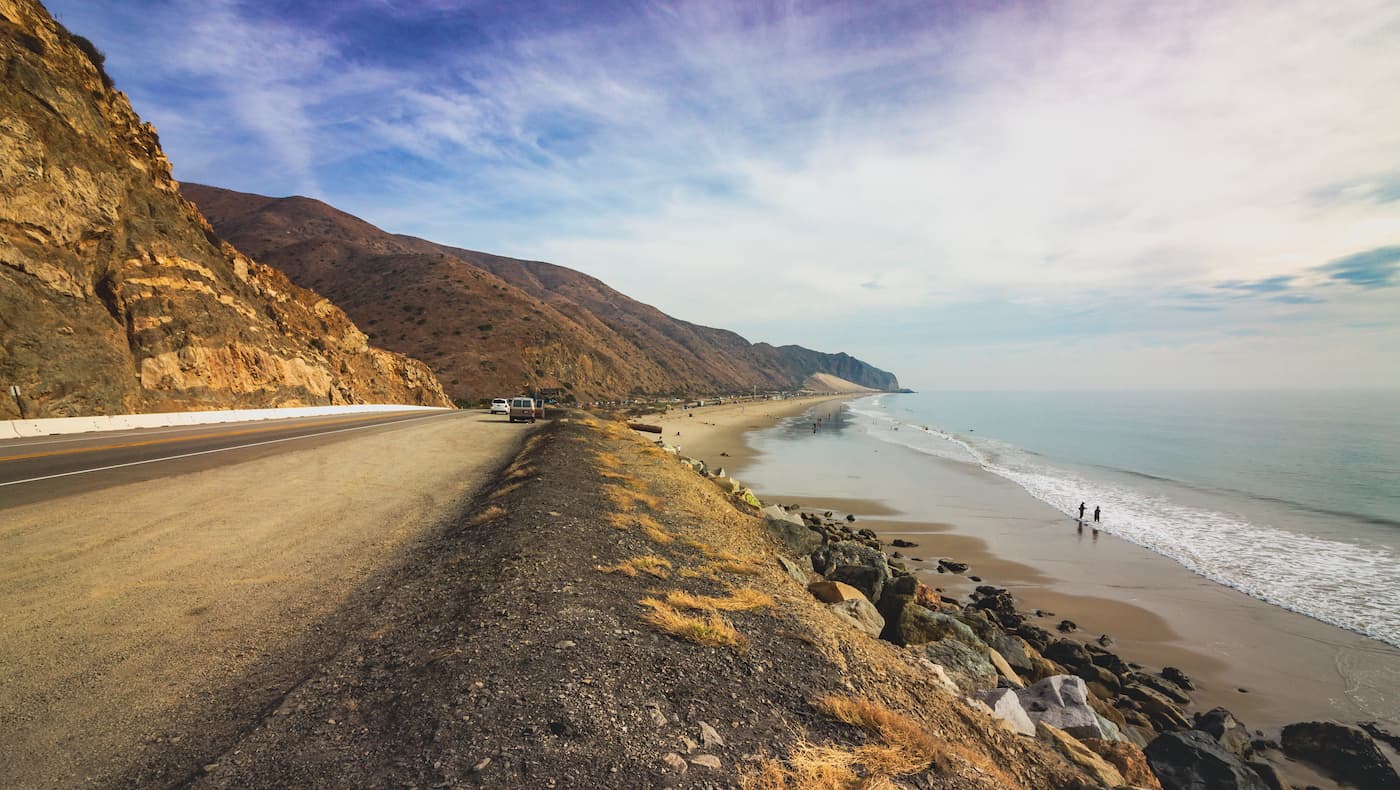
Encompassing one of the largest protected areas of the Mediterranean-type ecosystem, the Santa Monica Mountains have dry, warm summers and generally mild, wet winters. The range boasts a variety of flora and fauna, including over 1,000 plant species, 400 species of birds, 35 species of reptiles, and more than 50 threatened or endangered plants and animals. Bobcats, coyotes, and mountain lions are also known to frequent the area.
Several features in the Santa Monica Mountains, including Sandstone Peak, Split Rock, Skull Rock, and Tri Peaks, stretch to over 3,000 feet in elevation. Though the range is moderate in height and is largely developed, its diverse topography and proximity to major metropolitan cities make it a particularly popular destination for local hikers and beachcombers.
The eastern portion of the range, nearest Los Angeles, is far more developed than the western end of the range. The western mountains separate the Conejo Valley from Malibu, a beautiful beach city located 30 miles from Los Angeles, and end at Mugu Peak. The eastern mountains form a barrier between the San Fernando Valley and the Los Angeles Basin, separating “the valley” and west-central Los Angeles.
The majority of the Santa Monica Mountains are located within the Santa Monica Mountains National Recreation Area, a 156,671-acre recreation area that protects popular parks and preserves including Griffith Park, Malibu Creek State Park, and Topanga State Park. Today, over twenty individual state and municipal parks are in the Santa Monica Mountains.

Solstice Canyon is a picturesque canyon beloved by locals for its natural beauty and relative solitude. Just north of Malibu, Solstice boasts an array of hiking trails ranging from easy to strenuous. Hikers heading to the Solstice waterfall, the most-frequented site in the canyon, will pass remnants of the Keller House, a stone hunting cabin built over 100 years ago, and the Roberts Ranch, a home designed by Paul Revere Williams in 1952.
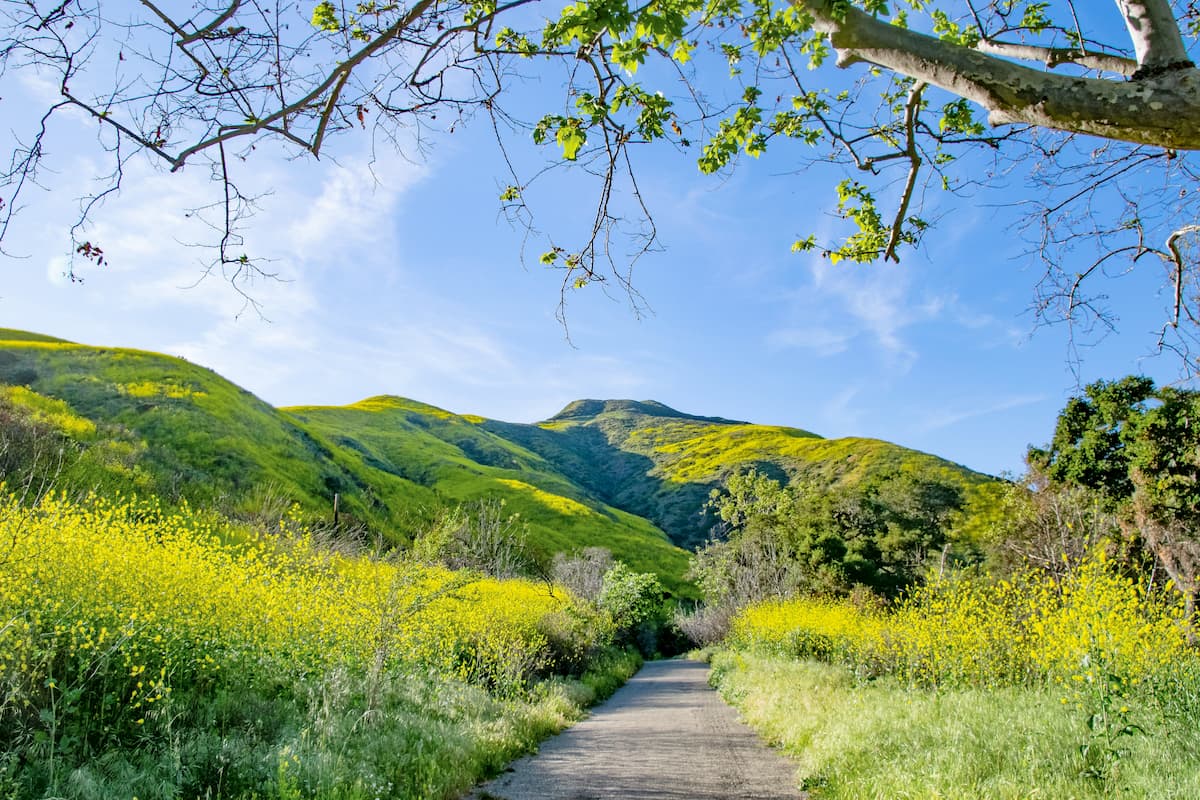
Runyon Canyon is a 160-acre park that sits at the eastern end of the Santa Monica Mountains. One of the most popular hiking destinations in Los Angeles, Runyon Canyon boasts several overlapping loops with scenic views overlooking Hollywood. Celebrity sightings aren’t uncommon in Runyon Canyon, due to the park’s proximity to Hollywood Hills, so you should expect to share the trail with both outdoor enthusiasts and star-struck sightseers.
Malibu Creek State Park encompasses over 8,200-acres of Malibu Creek Canyon and is a popular destination among Hollywood history buffs. In the 1940s, Malibu Creek was the backdrop to iconic Hollywood productions like “Planet of the Apes,” and “Butch Cassidy and the Sundance Kid.” The park’s most popular trail, however, leads to the former set of the hit television series M*A*S*H. Hikers often take this trail to snap selfies with an old military ambulance and rusted relics from the series.
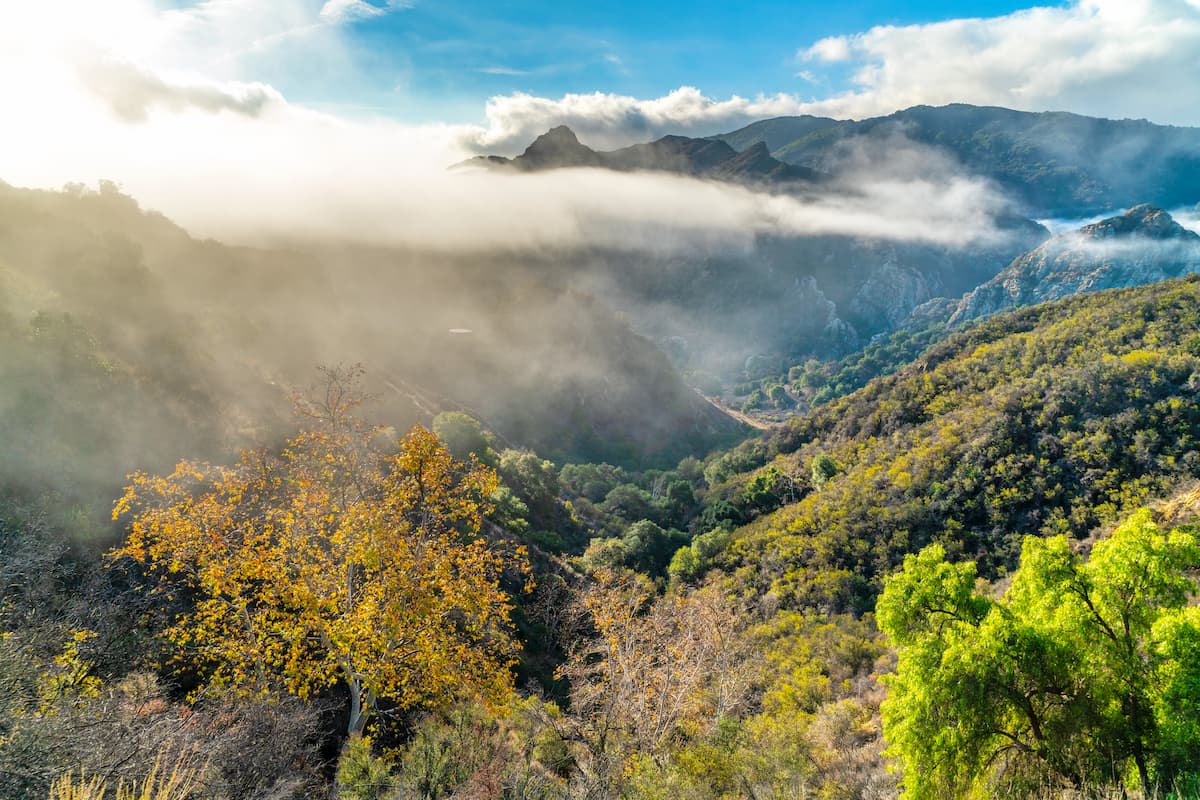
Stretching from Topanga Canyon to Pacific Palisades and Mulholland Drive, Topanga State Park encompasses 11,000 acres of the Santa Monica Mountains. Topanga is not only the largest park in the Santa Monica Mountains, but it’s also considered the largest in Los Angeles. Over 35 trails and unimproved roads exist within the park. Popular trails include Eagle Rock, the Backbone Trail System, and the Santa Inez trail.
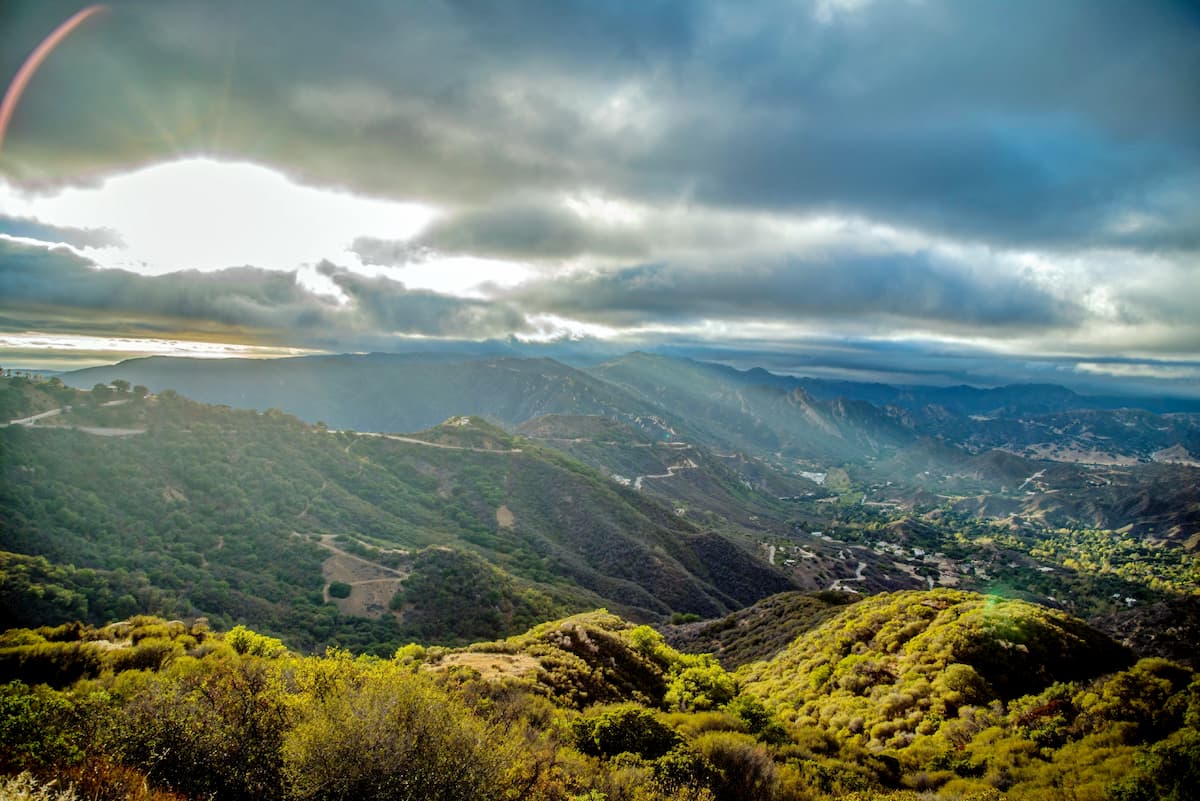
Several Los Angeles communities are located along the north slope of the Santa Monica Mountains including Calabasas, Agoura Hills, Thousand Oaks, Westlake Village, Woodland Hills, West Hills, and Bell Canyon. On the southern slope of the Santa Monica Mountains, communities like Beverly Hills, Santa Monica, and Malibu boast a variety of amenities and accommodations.

Explore Santa Monica Mountains with the PeakVisor 3D Map and identify its summits.






